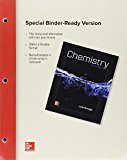
The
is
Want to see the full answer?
Check out a sample textbook solution
Chapter 18 Solutions
Package: Loose Leaf Chemistry with Connect 2-year Access Card
- The standard free energy change, rG, for the formation of NO(g) from its elements is + 86.58 kJ/mol-rxn at 25 C. Calculate Kp at this temperature for the equilibrium N2(g) + O2(g) NO(g) Comment on the sign of rG and the magnitude of Kp.arrow_forwardThe equilibrium constant Kc for the synthesis of methanol, CH3OH. CO(g)+2H2(g)CH3OH(g) is 4.3 at 250C and 1.8 at 275C. Is this reaction endothermic or exothermic?arrow_forwardKp for the formation of phosgene, COCl2, is 6.5 1011 at 25 C. CO(g) + Cl2(g) COCl2(g) What is the value of Kp for the dissociation of phosgene? COCl2(g) CO(g) + Cl2(g)arrow_forward
- Hydrogenation, the addition of hydrogen to an organic compound, is an industrially important reaction. Calculate rH, rS, and rG for the hydrogenation of octene, C8H16, to give octane, C8H19 at 25 C. Is the reaction product- or reactant-favored at equilibrium? C8H16(g) + H2(g) C8H18(g) Along with data in Appendix L, the following information is needed for this calculation.arrow_forwardConsider the equation G = G + RT ln(Q). What is the value of G for a reaction at equilibrium? What does Q equal at equilibrium? At equilibrium, the previous equation reduces to G = RT ln(K). When G 0, what does it indicate about K? When G 0, what does it indicate about K? When t G = 0, what does it indicate about K? G predicts spontaneity for a reaction, whereas G predicts the equilibrium position. Explain what this statement means. Under what conditions can you use G to determine the spontaneity of a reaction?arrow_forwardCalculate rG at 25 C for the formation of 1.00 mol of C2H6(g) from C2H4(g) and H2(g). Use this value to calculate Kp for the equilibrium. C2H4(g) + H2(g) C2H6(g) Comment on the sign of rG and the magnitude of Kp.arrow_forward
- Consider the decomposition of CaCO3(s) into CaO(s) and Co2(g). What is the equilibrium partial pressure of CO2 at room temperature?arrow_forwardExplain the difference between K, Kp, and Q.arrow_forwardFor each reaction, an equilibrium constant at 298 K is given. Calculate G for each reaction. (a) H+(aq) + OH-(aq)H2O Kc = 1.0 1014 (b) CaSO4(s)Ca2+(aq) + SO42 (aq) Kc = 7.1 105 (c) HIO3(aq)H+(aq) + IO3 (aq) Kc = 1.7 101arrow_forward
- Distinguish between the terms equilibrium constant and reaction quotient. When Q = K, what does this say about a reaction? When Q K, what does this say about a reaction? When Q K. what does this say about a reaction?arrow_forwardSulfur oxychloride, SO2Cl2, decomposes to sulfur dioxide and chlorine gases. SO2Cl2(g)SO2(g)+Cl2(g) At a certain temperature, the equilibrium partial pressures of SO2, Cl2, and SO2Cl2 are 1.88 atm, 0.84 atm, and 0.27 atm, respectively. (a) What is K at that temperature? (b) Enough Cl2 condenses to reduce its partial pressure to 0.68 atm. What are the partial pressures of all gases when equilibrium is reestablished?arrow_forwardThe formation of ammonia from its elements is an important industrial process. 3 H2(g) + N2(g) 2 NH3(g) 1. Does the reaction shift to the right or to the left, or does it remain unchanged, when extra H2 is added? (a) shift left (b) shift right (c)unchangedarrow_forward
 Chemistry & Chemical ReactivityChemistryISBN:9781337399074Author:John C. Kotz, Paul M. Treichel, John Townsend, David TreichelPublisher:Cengage Learning
Chemistry & Chemical ReactivityChemistryISBN:9781337399074Author:John C. Kotz, Paul M. Treichel, John Townsend, David TreichelPublisher:Cengage Learning Chemistry & Chemical ReactivityChemistryISBN:9781133949640Author:John C. Kotz, Paul M. Treichel, John Townsend, David TreichelPublisher:Cengage Learning
Chemistry & Chemical ReactivityChemistryISBN:9781133949640Author:John C. Kotz, Paul M. Treichel, John Townsend, David TreichelPublisher:Cengage Learning Chemistry: Principles and ReactionsChemistryISBN:9781305079373Author:William L. Masterton, Cecile N. HurleyPublisher:Cengage Learning
Chemistry: Principles and ReactionsChemistryISBN:9781305079373Author:William L. Masterton, Cecile N. HurleyPublisher:Cengage Learning Chemistry: The Molecular ScienceChemistryISBN:9781285199047Author:John W. Moore, Conrad L. StanitskiPublisher:Cengage Learning
Chemistry: The Molecular ScienceChemistryISBN:9781285199047Author:John W. Moore, Conrad L. StanitskiPublisher:Cengage Learning Chemistry: Principles and PracticeChemistryISBN:9780534420123Author:Daniel L. Reger, Scott R. Goode, David W. Ball, Edward MercerPublisher:Cengage Learning
Chemistry: Principles and PracticeChemistryISBN:9780534420123Author:Daniel L. Reger, Scott R. Goode, David W. Ball, Edward MercerPublisher:Cengage Learning ChemistryChemistryISBN:9781305957404Author:Steven S. Zumdahl, Susan A. Zumdahl, Donald J. DeCostePublisher:Cengage Learning
ChemistryChemistryISBN:9781305957404Author:Steven S. Zumdahl, Susan A. Zumdahl, Donald J. DeCostePublisher:Cengage Learning





